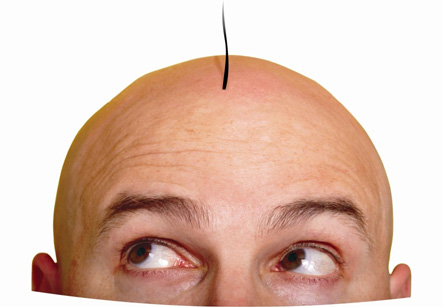Hair Transplantation
Introduction
Hair transplant surgery is a 40-year-old procedure. The recent advances in the field of hair transplant is based on the finding that composite grafts or occipital hair follicles, when transferred to the frontal area of the scalp, not only survive and grow but continue in a growth pattern throughout the patient’s life. New techniques have emerged during this span of 40 years. This article reviews some of the advances during this time and state-of-the-art techniques.
Indications for hair transplantation include:
1. Androgenic alopecia
2. Male pattern alopecia
3. Cicatricialor scar-related alopecia
We have all the information you need about public and private Cosmetic / Plastic clinics that provide Hair Loss Treatment in Iran, Islamic Republic Of with the best quality and lowest possible price

4. Traumatic alopecia
5. Traction alopecia.
Androgenic alopecia accounts for most of the patients seen for hair restoration. However, there are numerous other causes for hair loss. The treating physician should recognize that some of the causes are not suitable for surgical treatment as there is no unaffected donor site.
Alopecia areata is an autoimmune hair disease which causes cycle shift that can affect any area of the scalp. Sometimes all scalp hairs may be involved, leaving no healthy donor follicles. It also resolves with medication and topical therapy, with hair regrowth in most instances. Diffuse female alopecia also tends to involve the entire scalp and thus is not amenable to hair transplantation.
The surgeon requires being familiar with the blood supply and sensory nerve innervation of the scalp for planning incisions. Circumferential donor incision for harvesting occipital grafts may compromise the blood supply for future transplantation of the crown. Sensory innervations of both donor and recipient areas can be planned around regional nerve blocks and local ring blocks. The supraorbital nerve and retroauricular nerve blocks are helpful for local anesthesia of the scalp.
Staging alopecia is done according to both pattern and degree of severity of the hair loss. Patients with early limited alopecia require minimal treatment if accepted as candidates. Conversely, patients with advanced hair loss may no longer be candidates for the surgery since their alopecia is so extensive. However, the candidates with intermediate hair loss are the best patients for achieving most natural results.
The techniques described here have given excellent aesthetic hair transplant results to most of the hair loss.
Medical therapy often may be used in conjunction with hair restoration surgery. Minoxidil is available in 2% and 5% topical solutions. However, cosmetically useful hair is obtained in only about one third of cases and Minoxidil must be used indefinitely to maintain a response. Finasteride is a type 2 5-alpha reductase inhibitor available in 1 mg tablets and given once daily. It lowers the dihydrotestosteronein the cells of the scalp and serum of treated patients. Finasteride may be effective in preventing further hair loss and increasing hair counts to the point of cosmetically appreciable results. Hair loss on the temples is not improved with this treatment. Adverse effects are rare and patients must remain on the drug indefinitely, since the benefit may be lost after discontinuation.
The techniques described here have given excellent aesthetic hair transplant results to most of the hair loss. Still, for patients with extensive alopecia or those with thin black hair and pale white scalp skin, major grafts still produce a tufted or artificial appearance. Micrografting techniques are useful for this type of patients which involves the use of single hairs as an alternative method of hair replacement. This method has introduced a major variable in hair transplant surgery.
Specific contraindications to this procedure include various factors such as diffuse female pattern baldness, non–donor-dominant alopecia, and alopecia areata. The scarring alopecias do not respond to hair transplantation when in active phase. These include discoid lupus erythematosus, lichen planopilaris, and other cicatricial alopecia.